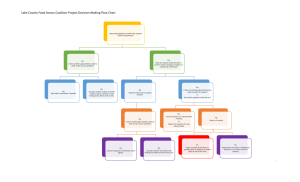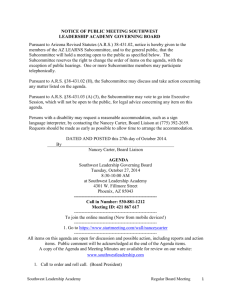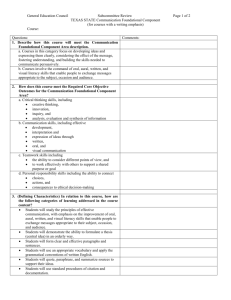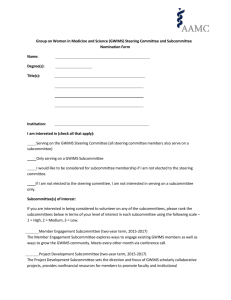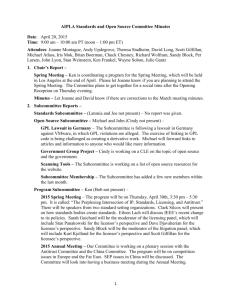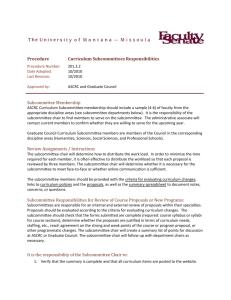ICEBP Vision Statement
advertisement
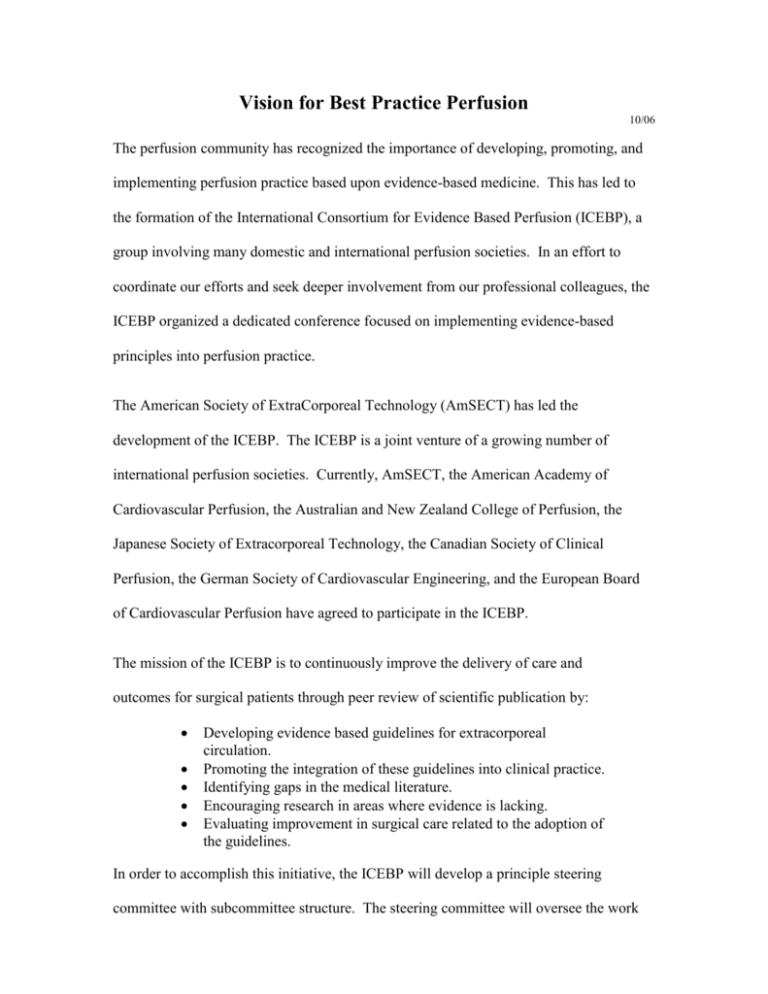
Vision for Best Practice Perfusion 10/06 The perfusion community has recognized the importance of developing, promoting, and implementing perfusion practice based upon evidence-based medicine. This has led to the formation of the International Consortium for Evidence Based Perfusion (ICEBP), a group involving many domestic and international perfusion societies. In an effort to coordinate our efforts and seek deeper involvement from our professional colleagues, the ICEBP organized a dedicated conference focused on implementing evidence-based principles into perfusion practice. The American Society of ExtraCorporeal Technology (AmSECT) has led the development of the ICEBP. The ICEBP is a joint venture of a growing number of international perfusion societies. Currently, AmSECT, the American Academy of Cardiovascular Perfusion, the Australian and New Zealand College of Perfusion, the Japanese Society of Extracorporeal Technology, the Canadian Society of Clinical Perfusion, the German Society of Cardiovascular Engineering, and the European Board of Cardiovascular Perfusion have agreed to participate in the ICEBP. The mission of the ICEBP is to continuously improve the delivery of care and outcomes for surgical patients through peer review of scientific publication by: Developing evidence based guidelines for extracorporeal circulation. Promoting the integration of these guidelines into clinical practice. Identifying gaps in the medical literature. Encouraging research in areas where evidence is lacking. Evaluating improvement in surgical care related to the adoption of the guidelines. In order to accomplish this initiative, the ICEBP will develop a principle steering committee with subcommittee structure. The steering committee will oversee the work of eight subcommittees: a clinically-based registry, pediatric process improvement, communications, evidence-based guideline writing group, educational, research development, adult process improvement, and scientific sessions. These subcommittees would serve to conduct the necessary work of accomplishing the mission of the ICEBP, and would report their progress to the steering committee. Each subcommittee would be required to report on their progress on a quarterly basis to steering committee. Membership to the steering committee would be limited to two individuals from each society. At least one member from the steering committee would be represented on each subcommittee. Clinically-Based Registry Subcommittee: -2- The mission of the registry subcommittee is to maintain a registry of the practice of cardiopulmonary bypass, and synthesize and share useful and actionable clinical information from this registry to engage and improve continuously the care provided to patients. The registry will provide reliable and contemporaneous information to clinical teams conducting cardiopulmonary bypass. This information will enable teams to assess their performance and identify how they perform as it relates to regional, national and international benchmarks. Additionally, this registry will afford the opportunity for addressing important and timely research questions for improving not only the care of patients but also the science of cardiopulmonary bypass. Registries should cover areas for adult as well as pediatric perfusion. It would be the goal of this subcommittee to work with participating perfusion societies to encourage their membership to participate in this registry, with consideration of including participation in the registry as a practice standard. Pediatric Process Improvement Subcommittee: The mission of the pediatric process improvement subcommittee is to develop, foster, and promote process improvement in the delivery of perfusion services for neonatal, infant and pediatric patients. The focus of this subcommittee would be the practice of cardiopulmonary bypass and extracorporeal membrane oxygenation (ECMO). Areas of investigations would be identified through reports generated by the clinical registry and guideline writing subcommittees. The best practice initiative will not be successful without providing the requisite skill sets to the clinical teams. This subcommittee in collaboration with the adult process improvement subcommittee would be charged with developing and implementing a -3- quality improvement training module. This training module would provide hands on and interactive training in the principles of quality improvement, team and leadership training to clinical teams caring for neonatal, infant and/or pediatric patients. Teams would learn how to evaluate their current practice and design tests of change, assessing whether changes result in improvement. Teams would also learn the concepts of measurement and systems assessment, and how to overcome organizational obstacles. Training would occur initially at key pilot sites that house early adopters and innovators in our profession. Subsequent to the training module, process improvement projects would be developed and implemented regionally, nationally and internationally. Interventions would be assessed through the clinically-based registry. Communication Subcommittee: With any large initiative, it is imperative to have a unifying voice and vision. The mission of the communication subcommittee is to coordinate communication regarding initiatives of the ICEBP with the perfusion communities and societies. The focus of this subcommittee would be to integrate itself with existing international societal communication committees when they exist. The ICEBP recognizes that it is imperative to leverage existing infrastructure within the international perfusion societies to promote and integrate the ICEBP initiatives. When these infrastructures do not exist, the ICEBP communication subcommittee will be helpful in creating one. Accordingly, membership on this subcommittee should include representatives from the international societies’ communication committees. -4- The communication subcommittee will identify and devote resources to promoting the ICEBP mission through a variety of media and print channels. The subcommittee will explore the use of the Internet, listserves, “dotProject.net”, and newsletters. Educational Subcommittee: The mission of the educational subcommittee is to integrate the principles of the ICEBP into the existing infrastructures responsible for training new and existing perfusion professionals. This subcommittee will be tasked with identifying the core skill sets necessary for new and existing professionals for practicing evidence-based perfusion. Curricula will, when possible, have commonalities throughout membership organizations. Curricula will include, but not be limited to, quality improvement methodologies, critical appraisal of the peer-reviewed literature, and data collection and synthesis. This subcommittee will coordinate efforts with the international accreditation boards of cardiovascular perfusion to integrate these principles into credentialing process. This subcommittee will also investigate avenues for including the ICEBP principles as a mandatory component of the continuing educational credits for existing perfusion professionals. Evidence-Based Guideline Writing Subcommittee The mission of the guideline writing subcommittee is to develop evidence-based clinical practice guidelines for cardiovascular perfusion. This committee would adopt the methodology used by the American College of Cardiology/American Heart Association (ACC/AHA) guideline writing group. These guidelines would be written and -5- subsequently updated to remain concurrent with the medical literature. The use of these guidelines in practice would be tracked through the clinical registry subcommittee. Each guideline would be submitted to the participating perfusion organizations for their review and endorsement prior to submission for publication. Involvement of representatives from each of the participating perfusion organizations in the guideline writing subcommittee should reduce any un/anticipated hurdles for the endorsement of any given guideline. Research Development Subcommittee The mission of the research development subcommittee is to identify, conduct and disseminate new knowledge concerning the practice of perfusion services. This subcommittee would utilize data from the clinical registry for any and all analyses. Areas of investigation would include, but are not limited to, gaps identified by the clinical guideline subcommittee. Adult Process Improvement Subcommittee The mission of the adult process improvement subcommittee is to develop, foster, and promote process improvement in the delivery of perfusion services for adult patients. Areas of investigations would be identified through reports generated by the clinical registry and guideline writing subcommittees. The best practice initiative will not be successful without providing the requisite skill sets to the clinical teams. This subcommittee in collaboration with the pediatric process improvement subcommittee would be charged with developing and implementing a quality improvement training module. This training module would provide hands on and -6- interactive training in the principles of quality improvement, team and leadership training to clinical teams caring for adult patients. Teams would learn how to evaluate their current practice and design tests of change, assessing whether changes result in improvement. Teams would also learn the concepts of measurement and systems assessment, and how to overcome organizational obstacles. Training would occur initially at key pilot sites that house early adopters and innovators in our profession. Subsequent to the training module, process improvement projects would be developed and implemented regionally, nationally and internationally. Interventions would be assessed through the clinically-based registry. Scientific Sessions Subcommittee The mission of the scientific sessions subcommittee is to develop and organize an annual scientific meeting focused on meeting the goals of the ICEBP mission statement. The scientific meeting will cover topics related to all other subcommittees. In addition, the subcommittee will be charged with examining areas into which the meeting can grow to allow demonstration of sustained improvement in the care provided to patients. -7-
